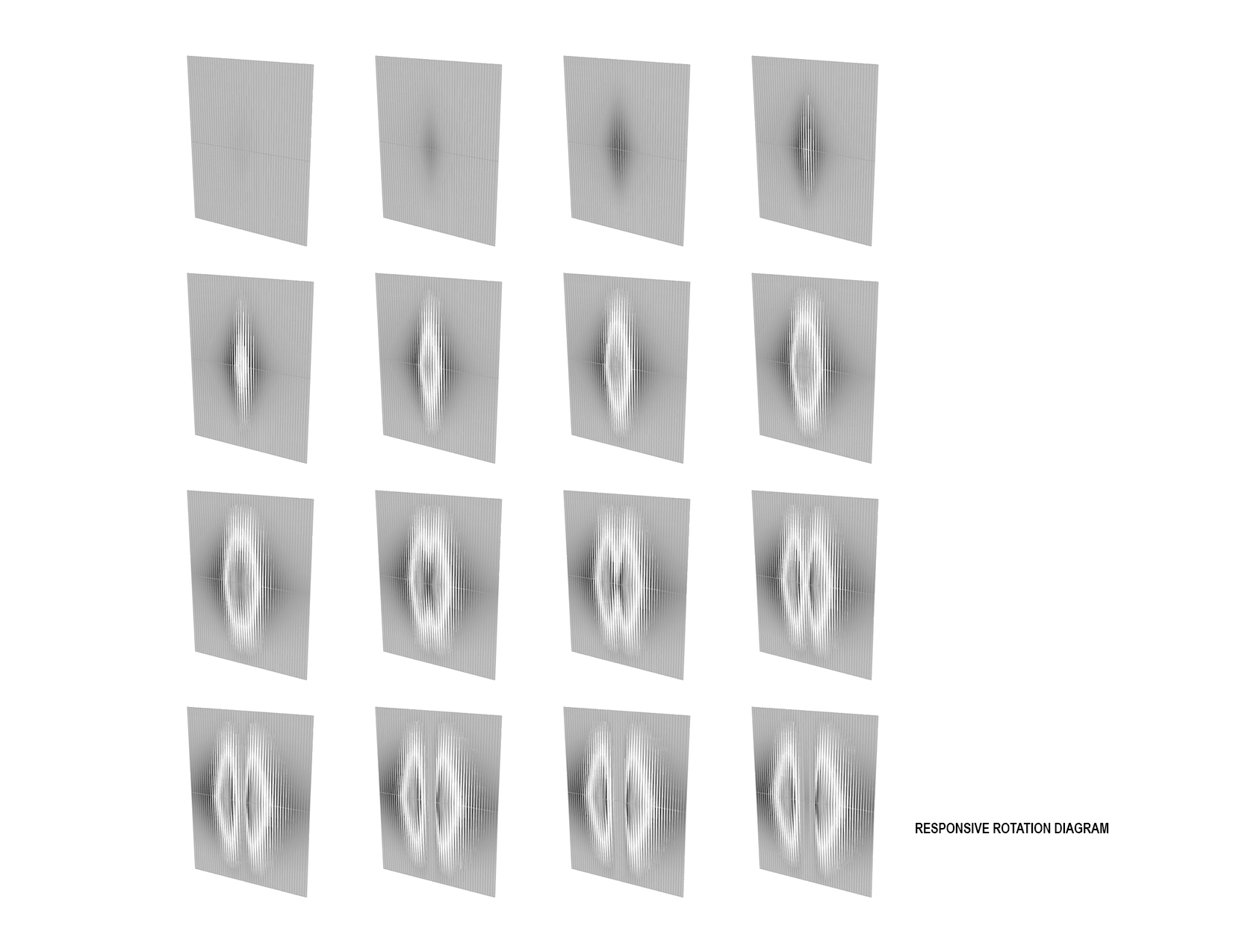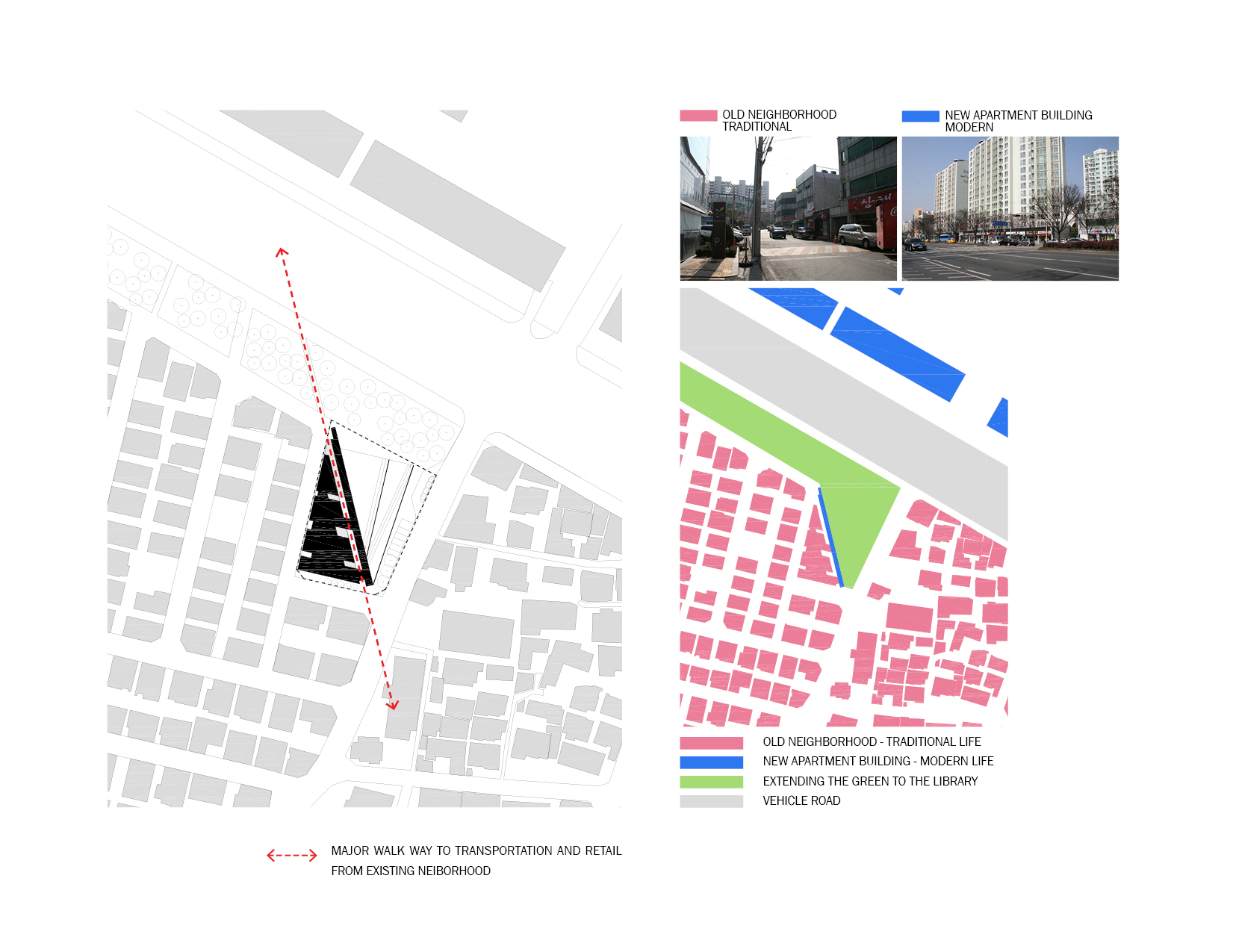

Rethinking the Bookshelves
In contemporary libraries, books or bookshelves no longer symbolize the function of a library. Instead, newly introduced media such as DVD, Blu-ray, internet, e-books, educational software and social media have drastically changed how people spend time in libraries. Other various needs such as off-line meetings, events and user generated activities have also evolved along with those newly introduced media. We are witnessing more complicated lifestyles and mixed cultural differences in the community. These people create their own spaces and meanings within the building, not necessarily aligning to architect’s intention, which make it difficult for architect to comprehend the function of the contemporary library. The architect is no longer deterministic to define the space and function.
Given this predicament, Urban-Stack library suggests to rethink the bookshelves that were hidden in the dark rooms of modern libraries. We will reinstate them to the symbolic and iconic manifesto, not in the traditional sense of functional purpose, but as an integrating mechanism of sensation and affection to embrace urban problems and to organize the new flexible spaces. The façade itself is formed by bookshelves, which respectively replaces the signage for the library. Pursuing flexibility and multiplicity, it is composed of dynamic facade system with shading devices so that books can be stored with minimum exposure to direct sunlight. The fabric facade only opens when people approach the stacks. After sunset, when most people in that area walk by the park and library, all of the fabric skin opens up and the unusual scale of books are presented to the park.
The simplicity of the bookshelves(East facade) contrasts to the complexity behind it(West facade). Here, the complexity represents the contextual interpretation of old town planning, small retail stores and apartments. The simplicity of the east facade responds to the newly constructed mega residential towers across the street. Facing these opposite urban conditions, it wants to reconcile the two different worlds and stitch the polarization in the site.


The facade of shelves also integrates a nearby municipal park, connecting the green axis to the library in two directions. One through an outdoor corridor from behind and another through the sloping green from the front. This gesture maximizes instead of hindering the continuity of the green experience. Behind this scene, the outdoor corridor penetrating the ground level of the library, preserves the old pathway for the people in the old town. This corridor not only physically brings people closer to the library, but it will also make the library community a friendlier attraction.
Sensation from the unexpected display of books in the urban scale will dramatize the image of library and interact with people. The display of bookshelves ironically revives the former glorious status of books and infuses the urban strategy into existing urban fabric. It is the return of books.






